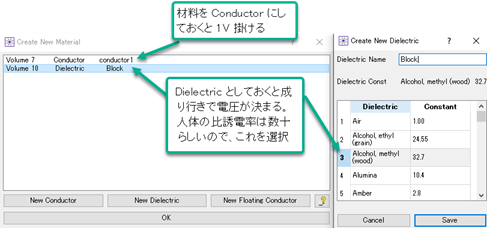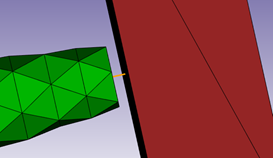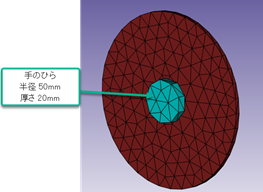Digital Debunking: Can You Avoid the Shock of Static Electricity With Your Palm?
During the cold, dry months of winter, everyday actions like flipping a light switch or grabbing a doorknob can result in an unwelcome jolt. Static electricity is the result of an imbalance of positive and negative charges; you get shocked when the buildup of negative electrical charge in your body amasses enough voltage to jump from your hand to a positively charged object. When charges equalize, they create sparks. This happens more often in the winter because cold air holds less moisture than warm air. Water vapor in the air conducts electrical charges away from your body, but when there’s less vapor, static charge is more likely to build up to “shocking” levels.
If you’re afraid of static electricity but unwilling to give up walking around on carpet with fuzzy socks, you’re probably wondering how you can avoid getting zapped. So, is there a trick to touching a doorknob without creating a spark? We used electromagnetic simulation software to find out.
Nobuyuki Fukuoka from our team in Japan opted to use the electrostatic field analysis tool called Charge by Fieldscale, which is available through the Altair Partner Alliance. This easy-to-use simulation tool helped him test whether touching an object with your fingertip or your palm made it more likely to produce a static shock.
Bringing Your Fingertip to a Charged Object
Figure 1 below represents a fingertip approaching an object.

Since Charge uses the boundary element method, we didn’t need a mesh for the space between the fingertip and object for this study. The object to be charged is identified as the conductor and the finger as the dielectric as shown below. For the conductor, 1 volt is applied automatically when performing the capacitance matrix extraction analysis, and for the dielectric, it’s decided by the situation. Only the material definition is needed to complete this step.

Figure 3 shows the charging status, but it’s not yet clear how easy it is to discharge static electricity from the fingertip.

Therefore, as shown in Figure 4, a line is drawn from the tip of the finger toward the charged object. Now the voltage distribution can easily be drawn on this line.

Figure 5 shows the voltage distribution between the fingertip and a charged object. The voltage is not an absolute value, and the difference is important. In this model, there was a voltage of 0.02V between the finger and the object.

Bringing Your Palm to a Charged Object
Next, we examined what happens when we bring a palm closer to a charged object (Fig. 6). The palm is a cylinder with a radius of 50 mm and a thickness of 20 mm. We modeled the objects and the gaps between them using the same conditions as the fingertip study.

Again, when initially looking at the charging status (Figure 7), it’s hard to tell how likely static is to discharge.

Checking the voltage between the palm and object (Figure 8) in the same way as the previous simulation, we found that 0.005V was applied. This is only a quarter of the voltage observed in the fingertip model. As such, we found touching a charged object with your palm is less likely to discharge a shock than touching the same object with your fingertip.

Our Conclusion: Touch With Your Palm
Based on the simulations conducted in Charge, it seems that you can avoid that dreaded zap by touching charged objects with your palm rather than your fingertip.
Charge is a great tool for arranging objects and calculating electrostatic fields. All you have to do is prepare the surface mesh of the shape, select the material, and the software automatically sets the majority of the analysis conditions for the user. Additionally, if you want to conduct more detailed studies of moving the finger to measure static electricity at varying distances for instance, you can use Altair® Flux®, which can simulate magnetostatic, steady-state, and transient conditions, along with electrical and thermal properties.

For more information about Altair’s electromagnetic analysis solutions, visit https://www.altair.com/electromagnetics-applications/.




